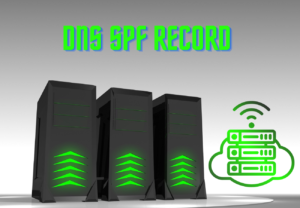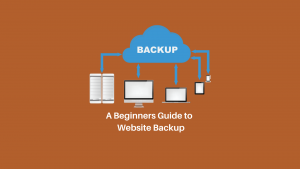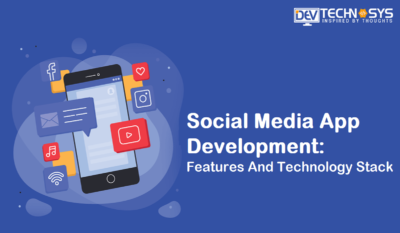Big Data – and how organizations manage and derive insight from it – is changing how the world uses business information. Its integration must work with many different types and sources to stay relevant. While operating at different latencies – from real-time to streaming. How do you build a world-class big data analytics plan for your business organization?
Make sure the information is reliable. Empower data-driven decisions across lines of business. Drive the strategy. And know how to wring every last bit of value out of it. Cloud, containers, and on-demand compute power – a SAS survey of more than 1,000 organizations explore technology adoption. The definition of big data is data that contains a greater variety of data.
More so, arriving in increasing volumes and with more velocity. This is also known as the three Vs. Illustrating how embracing specific approaches positions you to evolve your analytics ecosystems successfully. That said, you can visit the New Analytics Ecosystem to gather more. But is the term “data lake” just marketing hype? Or a new name for a data warehouse?
Remarkably, it’s clear that in this article, Phil Simon sets the record straight about a data lake, how it works, and when you might need one. But what is a data lake anyway? Is it just marketing hype? And, generally speaking, how does it differ from the traditional data warehouse? Stay with us as we try to unravel the mystery together so you can better understand.
Understanding What Big Data Entails Plus The 7 Key Principles Vs
More often, Big Data is a term that describes the large volume of structured and unstructured data that inundates a business daily. But it’s not the amount of data capacity that’s important. Instead, it’s what business organizations do with data that matters. Bearing in mind, it can be analyzed for insights that lead to better decisions and strategic business moves.
Big Data is more extensive, complex data sets, especially from new data sources. The data sets are so voluminous that traditional data processing software can’t manage them. But these massive volumes of data can be used to address business problems you wouldn’t have been able to tackle before. In other words, it’s data that is so large, fast, or complex.
Such that it’s difficult or impossible to process using traditional methods. Not forgetting, accessing and storing large amounts of information for analytics has been around for a long time. The large heap of data generated daily is giving rise to massive amounts of information, and correct analysis is obtaining the need of each organization.
The concept gained momentum in the early 2000s. When industry analyst Doug Laney articulated the now-mainstream definition, we can summarize the purpose of big data that it contains a greater variety of data. More so, arriving in increasing volumes and with more velocity. This is also known as the fundamental 7 Vs. of the big data — we’ll elaborate on that below.
1. Volume
The amount of data matters. With big data, you’ll have to process high volumes of low-density, unstructured data. This can be data of unknown value, such as Twitter data feeds, clickstreams on a web page or a mobile app, or sensor-enabled equipment. For some organizations, this might be tens of terabytes of data. For others, it may be hundreds of petabytes.
Organizations collect data from various sources, including business transactions, the Internet of Things (IoT) innovative devices, industrial equipment, videos, social media, and more. In the past, storing it would have been a problem – but cheaper storage on platforms like Data Lakes and Apache Hadoop has eased the burden.
2. Velocity
With the growth in the Internet of Everything (IoE), data streams into businesses at an unprecedented speed and must be handled promptly. RFID tags, sensors, and smart-enabled meters drive the need to deal with these torrents in near-real-time.
Velocity is the fast rate at which data is received and (perhaps) acted on. Typically, the highest velocity of data streams directly into memory versus being written to disk. Some internet-enabled innovative products operate in real-time or near real-time and will require real-time evaluation and action.
3. Variety
In terms of Variety, it refers to the many available types of data. Traditional data types were structured and fit neatly in a relational database — but with the rise of big data, data comes in new unstructured data types. It comes in all formats – from structured data to numeric data in traditional databases to unstructured data in text documents.
As well as semistructured data types, such as text, emails, videos, audio, stock tickers, and financial transactions. Often, unstructured data requires additional preprocessing to derive meaning and support metadata.
4. Variability
The meaning of words in an unstructured format can change based on context. Variability is different from variety. A coffee shop may offer six different blends of coffee, but if you get the same blend every day and it tastes different every day, that is variability. The same is true of data. If the meaning constantly changes, it can significantly impact your data homogenization.
5. Veracity
Quality issues invariably appear in big data sets with many different data types and sources. It deals with exploring a data set for data quality and systematically cleansing that it can be helpful for analysis. Veracity ensures the data is accurate, which requires processes to keep insufficient data from accumulating in your systems.
The simplest example is when contacts enter your marketing automation system with false names and inaccurate contact information. How many times have you seen Mickey Mouse in your database? It’s the classic “garbage in, garbage out” challenge.
6. Visualization
Visualization is critical in today’s world. Using charts and graphs to visualize large amounts of complex data is much more effective in conveying meaning than spreadsheets and reports chock-full numbers and formulas. Big Data must be visualized once analyzed for end-users to understand and act upon.
7. Value
The ultimate end game here is value. After addressing volume, velocity, variety, variability, veracity, and visualization — which takes a lot of time, effort, and resources — you want to be sure your organization is getting value from the data. It must be combined with rigorous processing and analysis to be helpful.
As more brands turn to partnership marketing as a revenue-generating channel, understanding the big data 7 Vs. — results in a winning partnership program and, ultimately, business growth. For example, just as we mentioned, we can consider Apache Hadoop, in this case, as a savior for extensive data analytics in assisting businesses and organizations to manage big data effectively.
The Most Commonly Used Terms In Cloud Computing Nowadays
Over the past few years, you may have heard someone somewhere drop the term “data lake.” The concept has increasingly gained traction as data volumes have increased exponentially, streaming data has taken off, and unstructured data has continued to dwarf its structured counterpart. Big Data is reforming many industrial domains by providing decision support.
Especially by analyzing large data volumes. Big Data testing aims to ensure that Big Data systems run smoothly and error-free while maintaining the performance and quality of data. However, because of the diversity and complexity of data, testing Big Data is challenging. Numerous types of research deal with Big Data testing; see a comprehensive review for businesses.
But addressing testing techniques and challenges is not conflated yet. Our finding shows that diverse functional, non-functional, and combined (functional and non-functional) testing techniques have been used to solve specific problems related to Big Data. At the same time, most testing challenges have been faced during the MapReduce validation phase.
In addition, combinatorial testing is one of the most applied techniques with other methods (i.e., random testing, mutation testing, input space partitioning, and equivalence testing) to solve various functional faults and challenges faced during Big Data testing. Inevitably, much of the confusion comes from the variety of new (for many) terms that have sprung up around it.
Below is a quick run-down of the most popular ones:
- Algorithm — mathematical formula run by software to analyze it
- Cloud (computing) — running software on remote servers rather than locally
- Data Scientists — These are experts in extracting insights and analysis from it
- Hadoop — a collection of programs that allow for the storage, retrieval, and analysis
- Predictive Analytics — using analytics to predict trends or future events
- Internet of Things (IoT) — refers to objects (like sensors) that collect, analyze and transmit their own (often without human input)
- Web scraping — the process of automating the collection and structuring of sitemaps and sets from websites (usually through writing code)
- Structured v Unstructured data — structured set is anything that can be organized in a table. So that it relates to other sets in the same table. An unstructured set is everything that can’t.
- Amazon Web Services (AWS) — a collection of cloud computing services that help businesses carry out large-scale computing operations without needing the storage or processing power in-house
With all the data collected and analyzed, it is not enough if the response time is too slow. For your information, there is a 2018 Verizon report on 33,000 incidents based on cyber-attacks to note. It stated that, in most instances, it takes only a few minutes for a hacker to “get in” and, most often, just a few hours to do permanent damage – through a ransomware attack.
Why Big Data Is Important In Cloud Computing For Businesses
Eventually, some of the challenges of Big Data In Cybersecurity can impact the ability to detect, prevent, and respond to cyber threats promptly and efficiently. It’s important to realize that Incident Response is a critical piece of Cybersecurity still in its development stages. Data scientists are still creating Algorithms to help them analyze Big Data related to Cybersecurity.
According to Research and Market reports, in 2017 the global market in this field was worth $32 billion. And by 2026 it is expected to reach by $156 billion.
The main importance of it doesn’t revolve around how much data you have, but what you do with it. Moreover, you can take it from any source and analyze it to find various answers.
Answers that enable;
- cost reductions,
- time reductions,
- new product development and optimized offerings, and
- smart decision making.
Particularly, it helps you determine the root causes of failure in businesses. As well as the ability to analyze sales trends based on analyzing customer buying history.
On the other hand, it helps determine fraudulent behavior and reduce risks that might affect the organization. And when you combine it with high-powered analytics, you can also accomplish business-related tasks.
Such tasks include:
- Determining root causes of failures, issues, and defects in near-real-time.
- Generating coupons at the point of sale based on the customer’s buying habits.
- Recalculating entire risk portfolios in minutes.
- Detecting fraudulent behavior before it affects your organization.
While understanding its value, it continues to remain a challenge.
Whereby, other practical challenges, including funding and return on investment and skills, continue to remain at the forefront. Especially for several different industries that are adopting its use. So, more importantly, however, where do you stand when it comes to this field?
You will very likely find that you are either:
- Trying to decide whether there is true value in Big Data or not.
- Evaluating the size of the market opportunity.
- Developing new services and products that will utilize Big Data.
- Already using Big Data solutions. Repositioning existing services and products to utilize Big Data, or
- Already utilizing Big Data solutions.
With this in mind, having a bird’s eye view of Big Data and its application in different industries will help you better appreciate it.
As well as what your role is or what it is likely to be in the future. May it be in your industry or across various industries.
Who Is Focusing On It?
Big data is a big deal for industries. The onslaught of IoT and other connected devices has created a massive uptick in the number of information organizations collect, manage, and analyze. And along with it comes the potential to unlock big insights – for every industry, large to small.
Industry influencers, academicians, and other prominent stakeholders certainly agree that Big Data has become a big game-changer. In most, if not all, types of modern industries over the last few years. As Big Data continues to permeate our day-to-day lives, there has been a significant shift of focus from the hype surrounding it to finding real value in its use.
Resource Reference: Top 10 Big Data Applications Across Industries
Additionally, deep learning craves it because big data is necessary to isolate hidden patterns. And also, to find answers without over-fitting the data. With deep learning, the more good quality data you have, the better the results. See more details on What is Deep Learning?
As for the SAS Industry, you’ll get solutions that meet your industry’s specific needs – no matter the size of your organization. From the world leader in business analytics software and services, meet the SAS company. Connect with SAS and see what we can do for you.
Generally, most organizations have several goals for adopting Big Data projects. While the primary goal for most organizations is to enhance the customer experience.
Other goals include;
- cost reduction,
- better-targeted marketing, and
- making existing processes more efficient.
In recent times, data breaches have also made enhanced security an important goal that these projects seek to incorporate.
Customer Big Data Analysis Solution
As an example, “BizXaaS BA” is a customer-data analysis service using Big Data techniques. This service combines the analysis infrastructure and standardized analytics report. Users can create various types of reports that give new insights into their customers’ behaviors.
This solution can be used for applications such as sales improvement by customer targeting and customer cancellation prevention. Furthermore, NTT DATA provides business consulting services and optimal services for creating customized reports.
Equally important, “Xrosscloud®” is NTT DATA’s total M2M solution comprising a cloud platform, and wide scope applications covering areas. Such as disaster prevention, healthcare, and transportation. Additionally, NTT DATA has a strong track record of successfully delivering Hadoop projects of different sizes.
From tens of servers up to thousands of servers, learn more about how NTT DATA covers the entire lifecycle of a Hadoop project here.
Takeaway,
While automated incident response time has dramatically improved in recent years, more will still be accomplished soon. With that in mind, in this article, we have explored some of the critical elements of “Big Data” and discussed their implications for maintaining a robust and secure cloud technology environment. Plus, the best security measures to put in place.
Whether or not you believe the hype about whether it will change the world, the fact remains that learning how to use the recent influx of data effectively can help you make better, more informed decisions. The thing to take away from it isn’t its largeness; it’s the variety. You don’t necessarily need to analyze much of it to get accurate insights.
Resource Reference: The Evolution Of Big Data And Data Lakehouse eBook (A PDF Download)
Otherwise, you need to make sure you are analyzing the right one. And to take advantage of this revolution, you need to start thinking about new and varied sources that can give you a more well-rounded picture of your customers, market, and competitors.
With today’s technologies, everything can be used as data — giving you unparalleled access to market factors. All in all, we hope you enjoyed reading this blog article. Feel free to Contact Us if you’ll need additional support or information. You can also Donate to support our ongoing projects and motivate our professional experts for their excellent research work.









